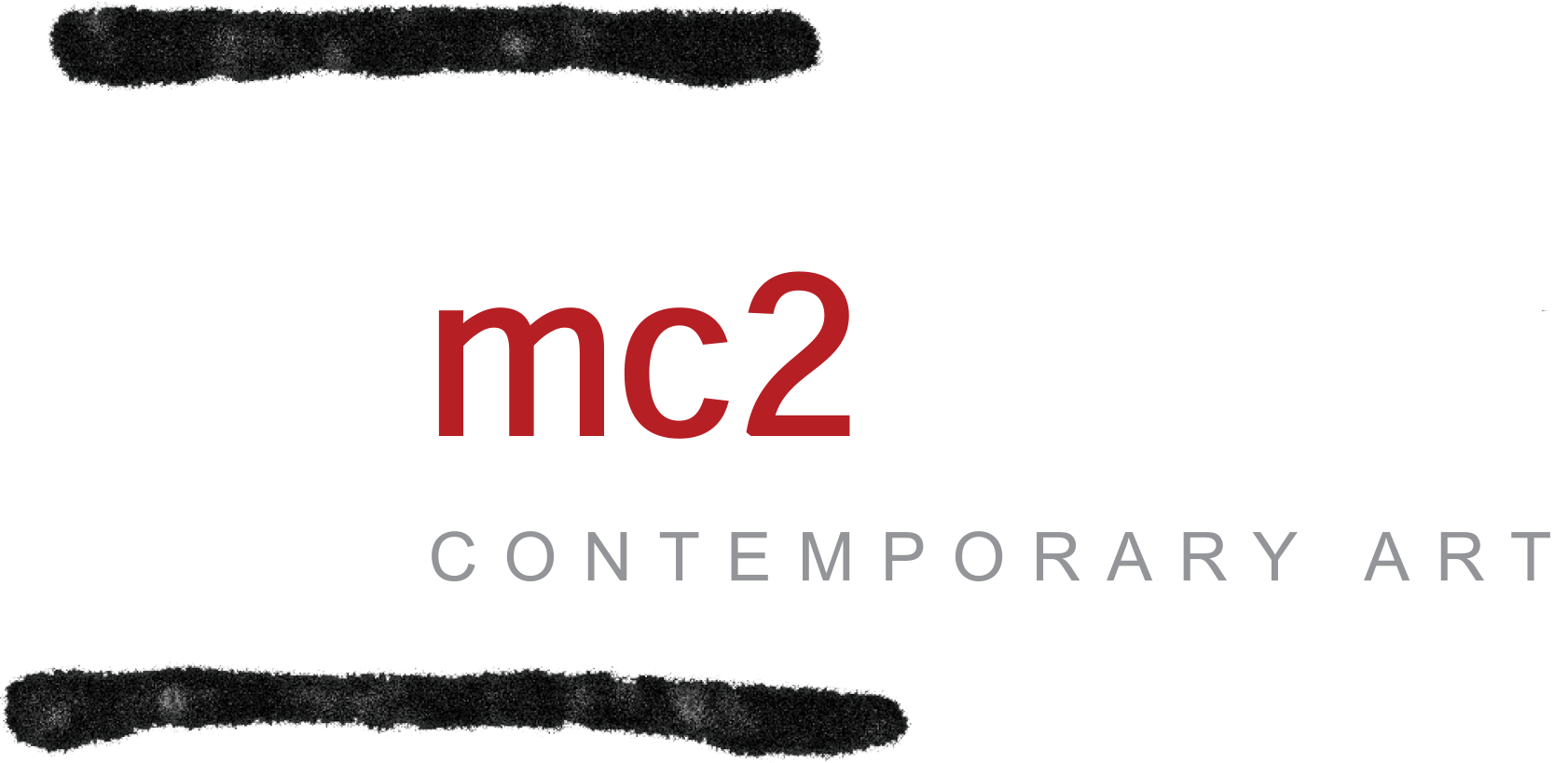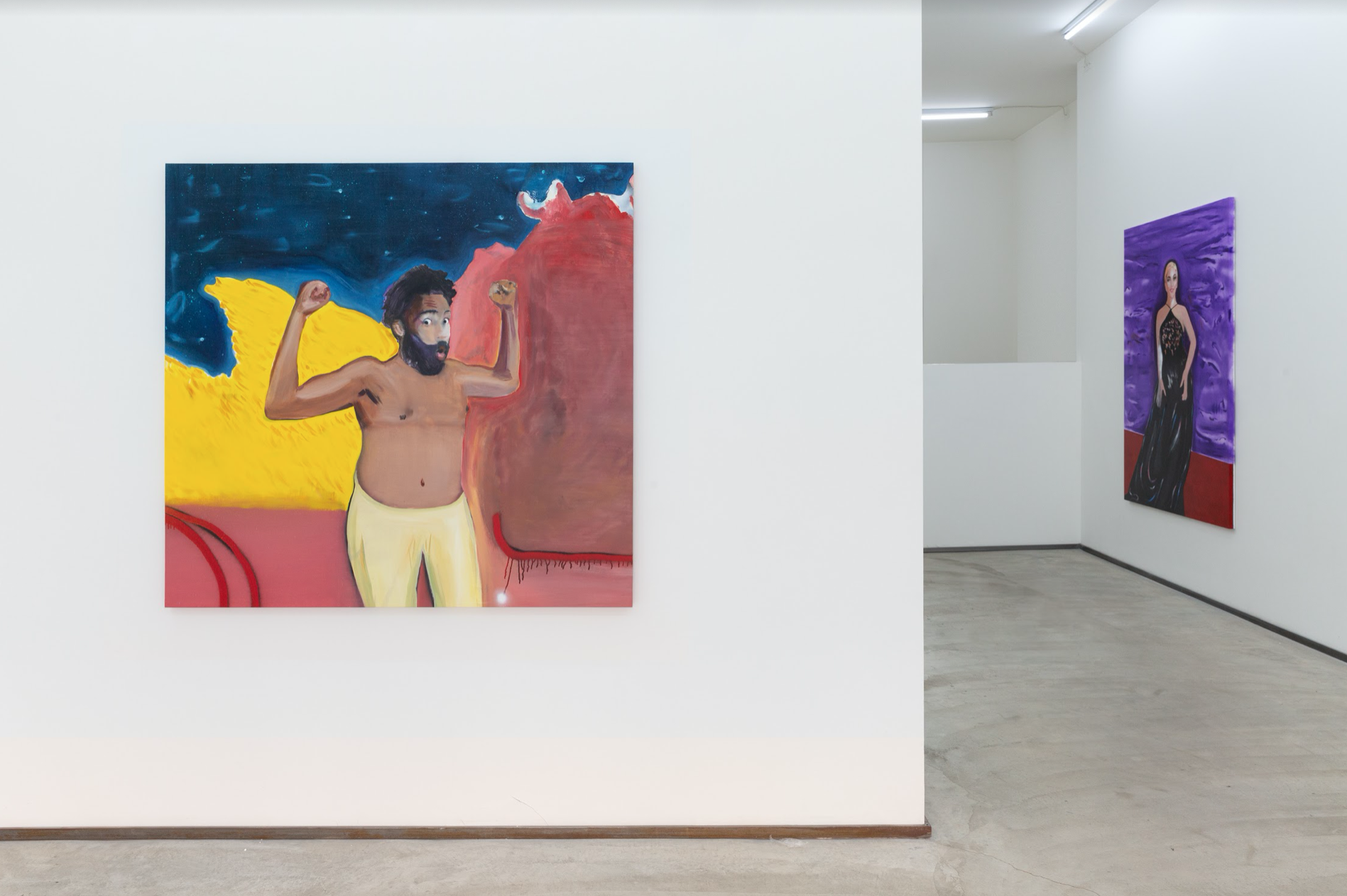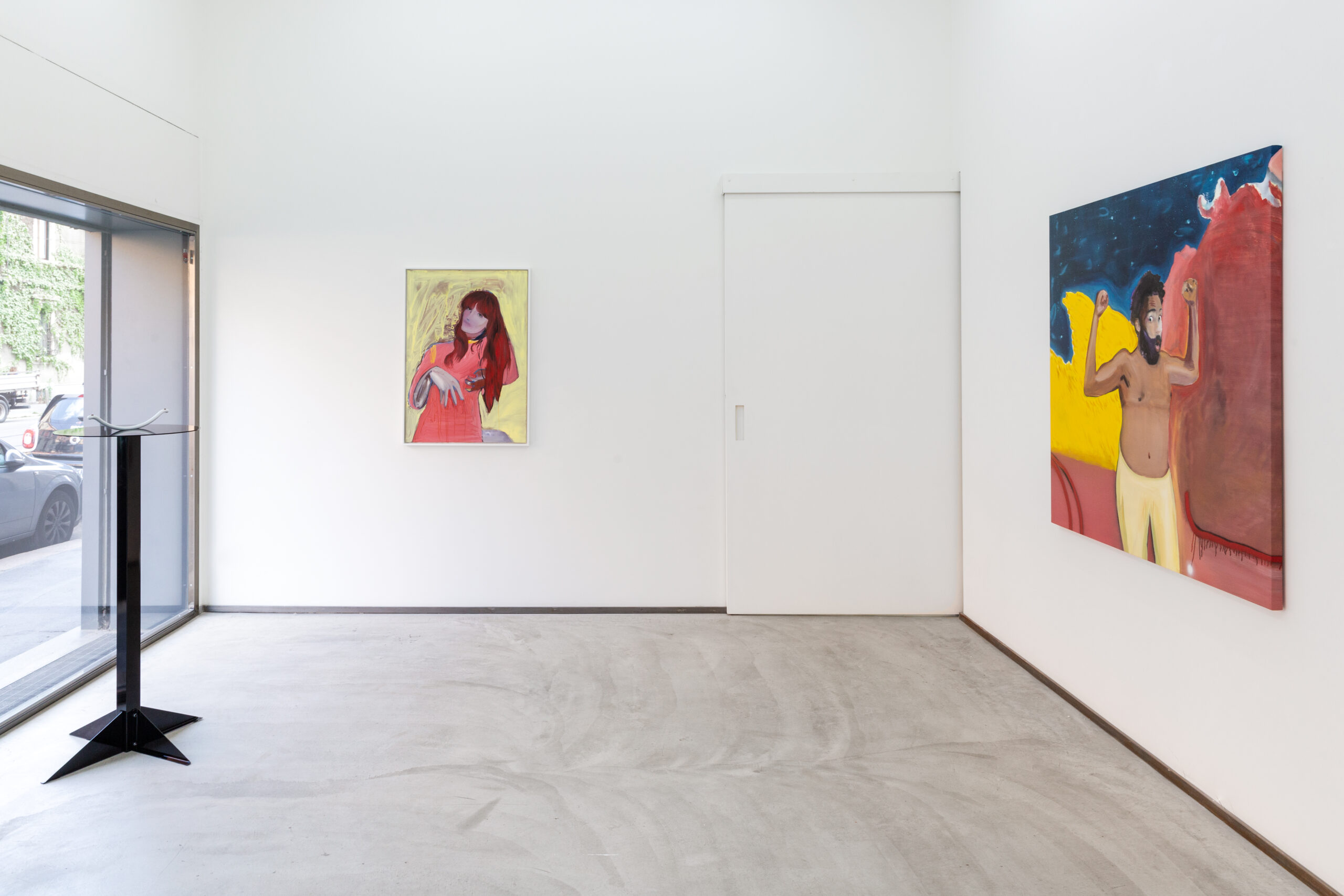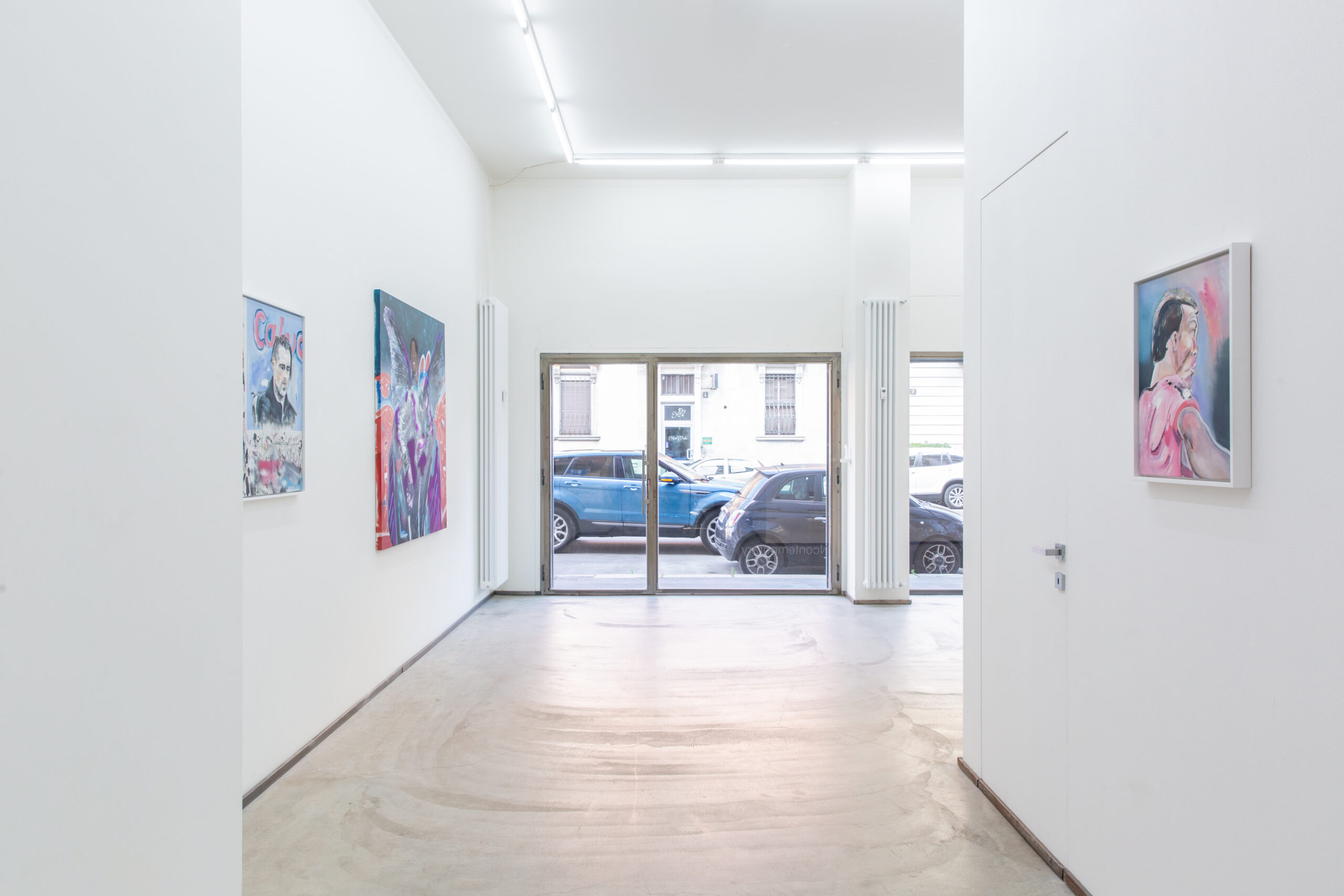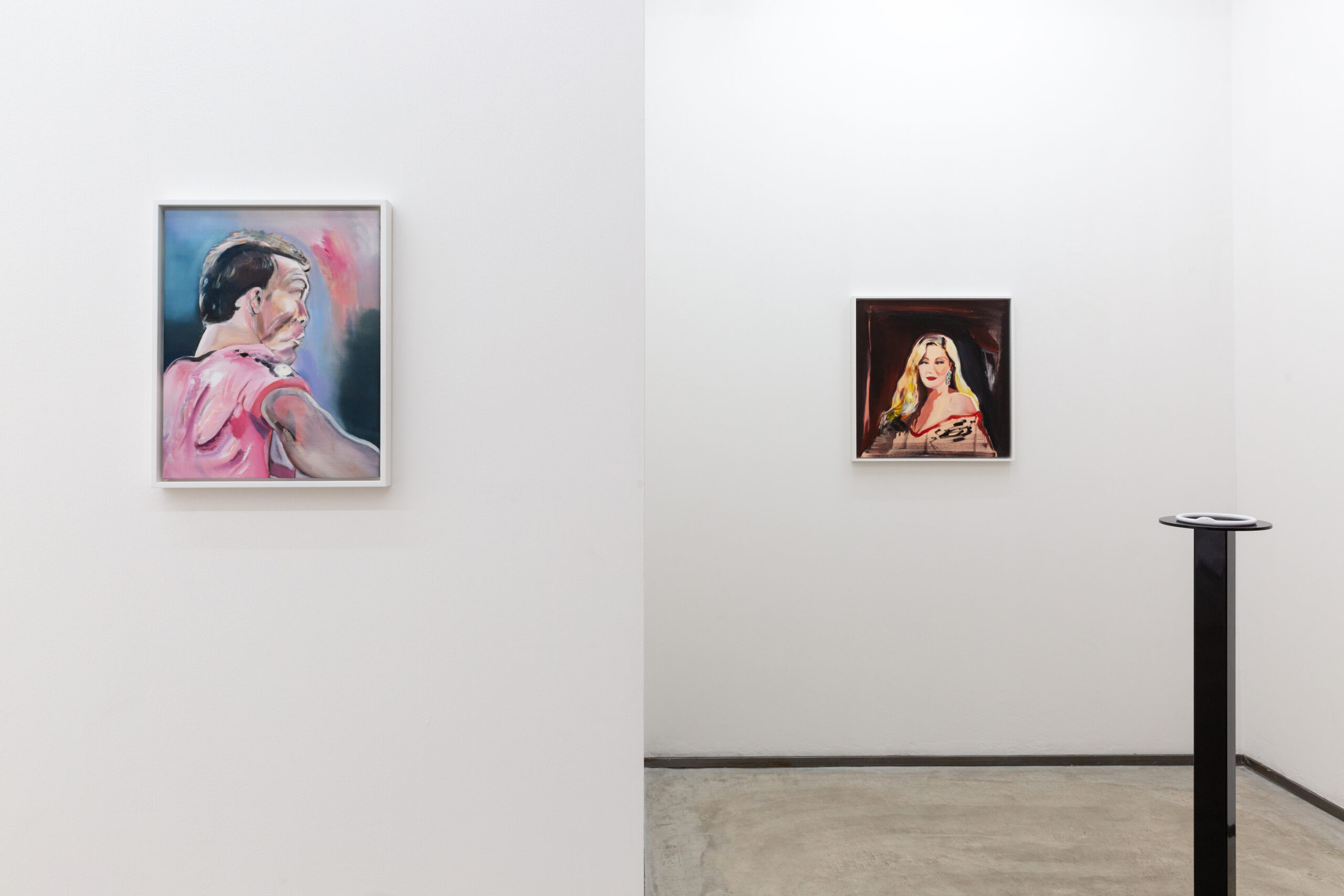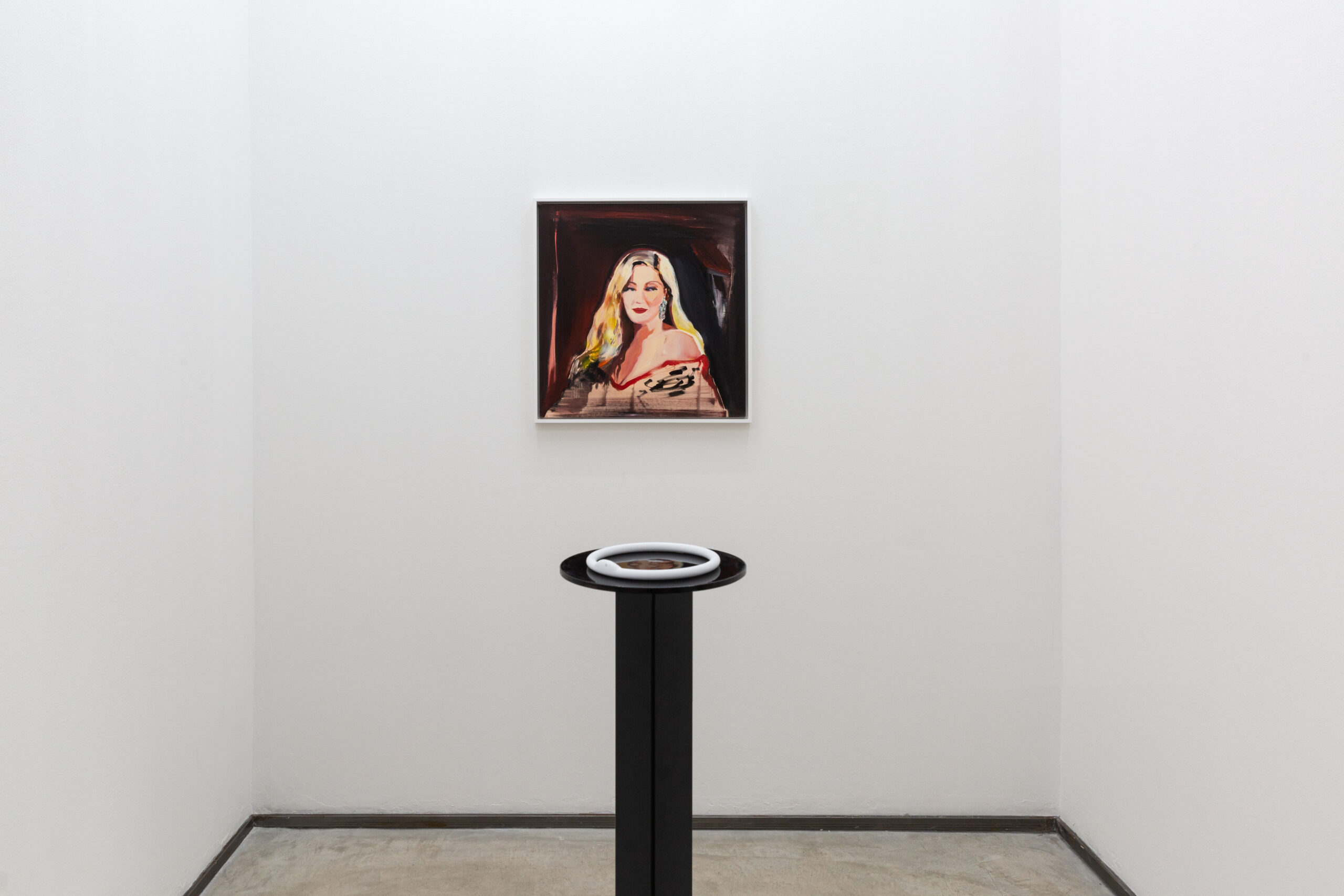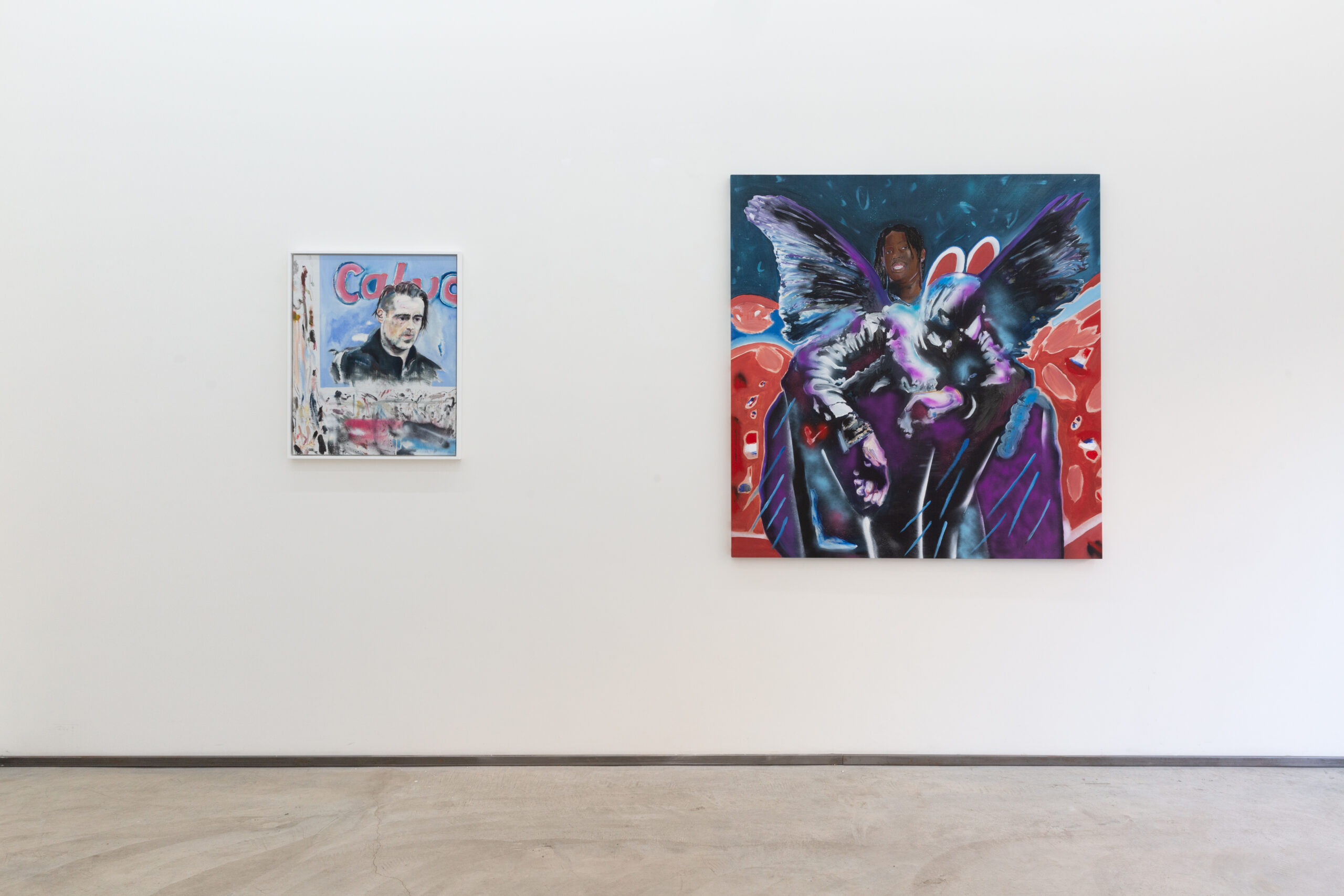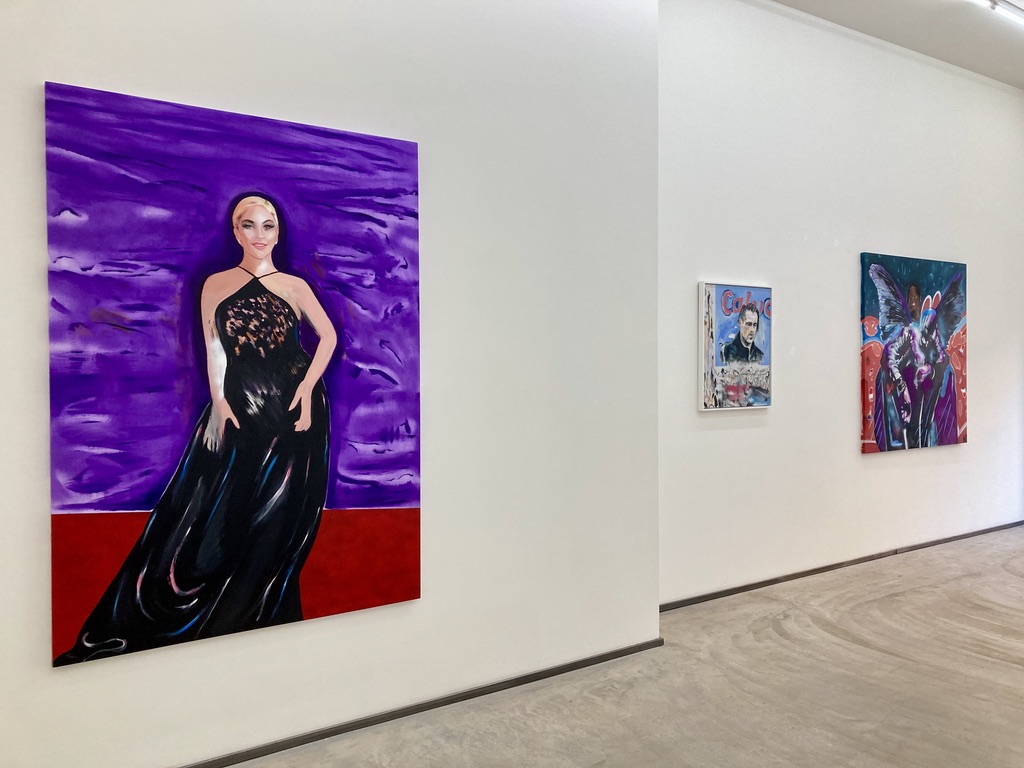“There’s no set rule. If a rule is made about anything, there’ll be an artist who breaks it.” This statement by painter David Hockney, from a series of famous conversations with the critic Martin Gayford, expresses an approach to painting punctuated by fractures and moments of discontinuity– such as when the artist, at the height of his success, chose not to finish the work George Dawson and Wayne Sleep (1972-75), a peculiarity that enables the piece to produce a slight quiver in the eye with respect to the naturalistic realm in which the artists previous compositions were located. Sometimes a painter feels the need escape the certainty of his own visual canons. Such was the case for Davide Serpetti during the preparation of his exhibition Heavy Metal Lover, which culminates with Red Dress/Vestito Rosso (2020), a painting programmatically composed of unfinished pictorial segments that appears to present new formal questions which the author aims to investigate in the continuation of his research.
The body of paintings on display act as continuous short-circuits to linear narrativity through a stylistic inhomogeneity achieved by a plurality of formal strategies, in which the signifier becomes a variable to repudiate the dogma of coherence. The faces populating the canvases are largely those of American popular culture figures including musicians and actors such as Lady Gaga, Colin Farrell, Kyle MacLachlan and Joaquin Phoenix. They comprise a contemporary pantheon which the author’s imagination feeds on daily, and for the occasion become a vehicle to externalize a series of sensations and emotional states: in the painting In Bruges (2016-20) the face of Colin Farrell is cloaked in a melancholy pathos that, along with a textual reference to the place in which it was begun, moors its visual climax to an emotional one. An aspect that most characterizes the work are large splashes of color (almost framing the figural segments) that seemingly reference a series of abstract precedents, from the Madonna delle Ombre (1440-50) by Beato Angelic in the Convent of San Marco in Florence, to the quick chromatic touches in the still lifes of Filippo de Pisis from the forties, up to the fragments of color in the public intervention The Virgin (2013) by Michaël Borremans in Ghent. The non-figural elements in Serpetti’s painting, originally born as proofs of color, make the process itself central to the finished work where, behind an apparent sense of precariousness, a full visual harmony unfolds.
In scrutinizing the individual works and reading the titles that accompany them it becomes clear how the various subjects are suspended between their nature as global icons and the existence of visual pretexts within which the artist indirectly evokes his own tensions and reflections. The original subjects are sources from film stills or advertisements (with a highly affected iconic dimension) that are emblems of the global iconosphere in which each of us is immersed; Serpetti’s painting thus does not allude to content sourced directly from reality, but to referents conveyed through a network who by their actions do not reflect
reality but help to define and condition it, creating desire and aspiration through the imaginary.
The liberty of this pictorial action leads to expunging any hierarchy from these figures, the aim of the paintings is not to present a visual narrative in a celebratory sense as the final part of the exhibition title (lover) might suggest, but rather to summon them as “actors” that interpret a series of emotional states. Furthermore, their status as symbols of a global cultural industry connected not only to media dynamics and social mores, but to issues of economics and power, presents various analyses to the interpreter ranging from admiration to discerning the evident contradictions. The philosopher Slavoj Žižek noted that “the critical procedure is increasingly obliged” to proceed “from the pseudo concrete imaginary to the abstract processes (…) that actually structure our life experience”: in this case, a series of fragments are extrapolated from the collective imagination of the inundation of pseudo- concrete images to render them probes capable of reading economic and social dynamics. The images from which the author begins are merely the initial epidermal layer of the work (designed to attract the viewer’s attention), through the pictorial practice they are innervated within a visual composition in which it is impossible to demarcate individual instances from collective ones.
The chromatic exuberance of the paintings is attenuated in the relationship with several sculptures that embody recurring topoi in Davide Serpetti’s works, as happens in Ouroboros from the series Ice cubes/ Uroboro dalla serie Cubetti di ghiaccio (2020): the serpent eating its tail is not only a metaphor for the cyclical nature of things, but also for images that after centuries, or within the trajectory of a single artist, periodically re-emerge to offer new meanings and formal transmutations.
English translation: Samantha Lloyd-Knauf
Note:
1 Martin Gayford, A Bigger Message. Conversazioni con David Hockney, Torino, Einaudi, 2012, p. 50. 2 Slavoj Žižek, Che cos’è l’immaginario, Milano, Il Saggiatore, 2016, a cura di Marco Senaldi, p. 16.
